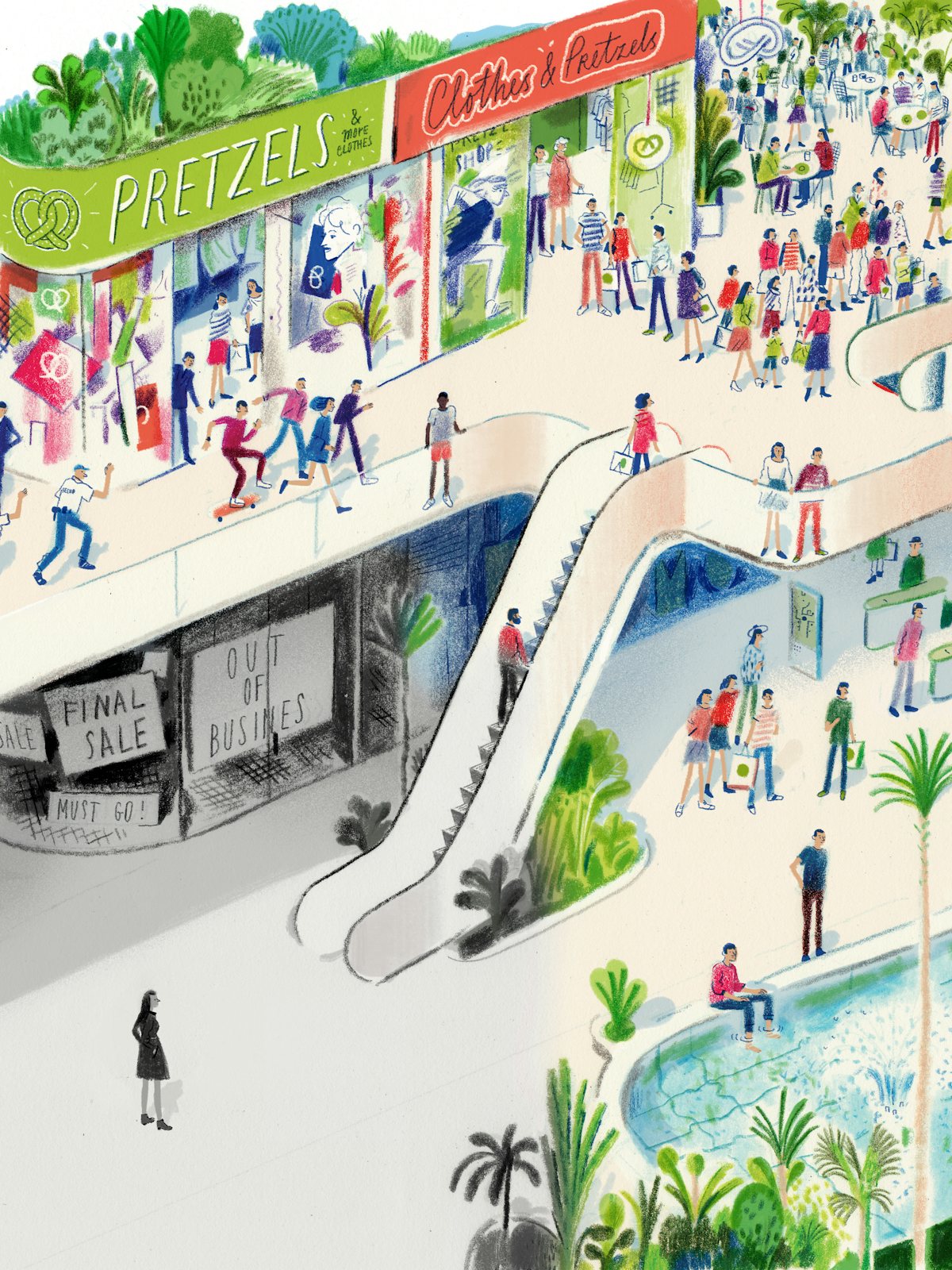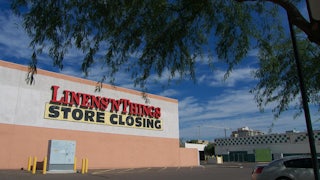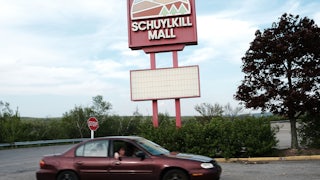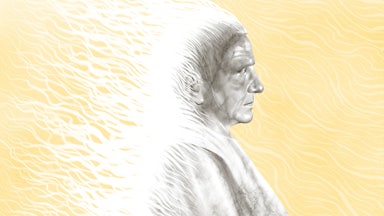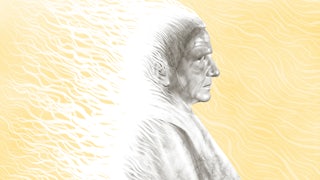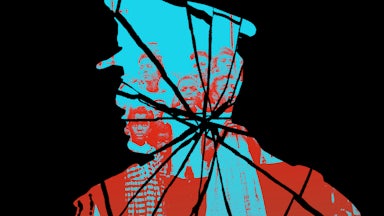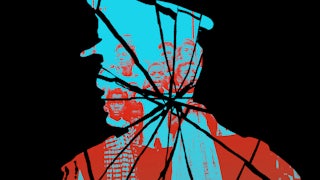In the days before the pandemic, when I visited the Museum of Modern Art, I would stop at Mrs. Fields. Mrs. Fields does not have the best cookies, especially in a city teeming with boutique bakeries. But getting a snack there was never about the quality of the food itself. A Mrs. Fields cookie summons up a weekend in the early 1990s when my parents would pack me and my siblings into our Volvo station wagon and drive us half an hour over state lines to the mall in Stamford, Connecticut. There, my mom would peruse high-end stores that didn’t have locations in our hometown, while my dad would take us kids to buy cookies and eat them on the steps that formed the mall’s gathering spot.
You could tell the story of many suburban childhoods through a progression of visits to such anodyne shopping centers. Once I was old enough to go to malls on my own, I met up with friends at the two main ones in White Plains, the New York City suburb where I grew up: the Galleria, where I got my ears pierced at Claire’s, and the Westchester, a shiny new beacon whose upscale nature was reflected in the fact that it had carpeting. By the time I moved away for college, I was over the world I left behind. When people asked where I was from, I’d answer, “a soulless suburb of New York City with no culture but lots of malls.”

I haven’t spent much time in shopping centers since—partly by choice, partly through circumstance. Malls have been struggling in one way or another since the 1990s, thanks to a slew of factors: a glut of such shopping centers, the replacement of department stores with big-box ones, recessions, the rise of the internet, and a new generation of mega-developer owners who are more cutthroat about their bottom lines. Even before the pandemic, which made gathering indoors dangerous, fewer Americans were whiling away their weekends and after-school hours at the mall. Yet for so many of us, the image of a sunlit atrium crossed by steadily gliding escalators, with a Bath & Body Works looming in the background, evokes a deep nostalgia. Like how, the minute I walk by a Mrs. Fields and smell that intoxicating scent of butter, sugar, and chocolate, my defenses drop.
The mall is “ubiquitous and underexamined and potentially a little bit embarrassing,” the design critic Alexandra Lange notes in the introduction to her new book, Meet Me by the Fountain: An Inside History of the Mall. Shopping is part of our daily lives, as are the spaces where we do it. Malls are fixtures of our physical and psychic landscapes, embedded with social and personal histories. They’re loaded symbols within our culture, inspiring feelings of allegiance or contempt. In George Romero’s famous 1978 movie, Dawn of the Dead, the mall is a home for humans and zombies alike. In the third season of the ’80s-nostalgic TV show Stranger Things, it’s simultaneously a place of teenage possibility and a Russian front for a sci-fi lab. In contemporary “ruin porn” photography, the empty shells of malls represent the just deserts of late-stage capitalism.
What makes malls the object of both longing and disdain? The civic purpose of the mall—unlike libraries, schools, and museums—has never been entirely clear. “In contrast to many other forms of public architecture, which embody fear, power, and knowledge, the mall is personal,” Lange writes. It’s not an institution, officially speaking, but it is social, a rare type of place intended to encourage hanging out. “At their best, malls create community through shared experience,” Lange says; at their worst, they’re temples to consumerism. They offer freedom—from parents, strict rules, the weather—even as they’re policed. They’re public, sort of, but also private, providing convenience at a price. Malls are not necessarily the communal spaces we would design for ourselves, but in a country short on alternatives, they’re the ones we’ve been given. Is it any surprise that we want them to be so much more?
The story of the mall, like so many quintessentially American things, begins with an immigrant. The architect Victor Gruen (née Viktor Grünbaum) was an Austrian Jewish émigré who fled the Nazis in 1938; upon arriving in the United States, he began designing eye-catching shops and other commercial projects in a European modernist style. Visionary and ambitious, Gruen didn’t invent the mall whole cloth, but he did pioneer the form and help embed it firmly in the American landscape.
Twentieth-century malls grew in part out of nineteenth-century arcades and department stores, important spaces for shopping and socialization. Their more immediate predecessors, however, were the shopping centers created for the suburbs that were growing around U.S. cities. As Lange explains, many of these were modeled on the idea of a high street: “the most artistic pattern for shopping districts outside the urban core looked like Main Street—but a Main Street transplanted to the edge of town and built all at once.” Gruen was drawn to the idea of creating a “one-stop shopping area” designed to serve a given community, but he wanted to find a different way to do it.
His first attempt was theoretical: For a 1943 issue of Architectural Forum magazine, he and his partner, Elsie Krummeck, dreamed up a neighborhood shopping center with an open-air courtyard that would be more than just a place of commerce; it would contain the “necessities of day-to-day living,” like doctors’ offices and a library. “Shopping thus becomes a pleasure, recreation instead of a chore,” they wrote. Eleven years later, that vision—in spirit, if not details—became a reality with the opening of Northland, a shopping center outside Detroit. Northland was funded by a downtown department store, Hudson’s, which also served as the core of the new complex. Around it, Gruen arrayed five more buildings containing smaller shops. The spaces between the buildings were connected by manicured, art-filled outdoor plazas, which were named after the features of various European cities (and curated by the artist Lily Swann Saarinen, wife of architect and designer Eero).
Northland was a success by multiple measures: Critics applauded the design, and people came, tens of thousands of them. Gruen next went to Minneapolis, where, in a similar scenario—a downtown department store investing in the suburbs—he expanded on his original concept by adding a key feature: air conditioning. The mall would be entirely enclosed, meaning you could shop, worry-free, year-round; an ad for the new center, called Southdale, boasted, “Every day will be a perfect shopping day.” Hammering home the wonder of such a feat, Gruen designed a “Garden Court of Perpetual Spring,” which Lange deems “the inspiration for all future mall atria.” It occupied the center of Southdale, stretching three stories high and almost a block long, with trees, a café, art, a carousel, and a cage filled with birds. Like Northland’s plazas, it was a leisurely environment, the kind of space where you’d want to linger—but now you could do so anytime, in any weather.
The court helped set the stage for what theorists call the “Gruen transfer,” defined by Lange as “the moment when your presence at the mall tips from being goal-oriented ... into a pleasure in itself.” Why come to buy one item when you could while away the day? This was what made Gruen’s designs novel: In his hands, the mall wasn’t just utilitarian; it was aspirational. Not just “Somewhere To Go”—to use a phrase coined by Ray Bradbury and referenced by Lange—but somewhere to be.
Depending, of course, on who you are. One of the problems of malls, like so many American things, is the discrimination embedded in them from the start. They originated in the suburbs, where white Americans fled in the postwar decades, building segregated communities in the process. Lange discusses Kansas City’s Country Club District, an early and influential suburb with its own Main Street–style shopping plaza. The developer, J.C. Nichols, “set a design standard that would be imitated in many other places,” she writes, and enforced it with form-based deed restrictions that also included racial strictures: no Black buyers. “The shopping mall, from its origins in plazas such as this one in Kansas City, has to be seen as a racist form,” Lange concludes, “born from speculation that a whites-only version of the city ... would prove to be a better return on investment.”
Even when discrimination was less blunt, structural forces still ensured that malls were meccas mostly for white people. The Federal Housing Administration, commercial banks, and developers colluded to keep Black people out of certain neighborhoods by redlining and refusing to insure mortgages, and exploited them by flipping houses in white neighborhoods at higher prices, a practice known as blockbusting. What’s more, while Gruen had envisioned his malls sitting within mixed-use neighborhoods that would integrate more of the needs and activities of a community, the developers he worked with often sold off the surrounding land in order to make money. This, combined with mid-century federal funding for highways at the expense of all other forms of transit, further consolidated the exclusionary realities of the suburbs and their attendant malls. “In proposing a downtown outside downtown, protected from the elements, ringed by parking lots, designed for a single use and rigidly planned,” Lange observes, “Victor Gruen had also created a mechanism to protect white, upwardly mobile homeowners from those unlike themselves.”
The malls of the ’50s and ’60s departed from Gruen’s vision in other ways, too, becoming more uniform and less surprising as they spread across the country. Amid a wave of new building, architects and developers set standards dictating how malls should look and feel. The Urban Land Institute’s annual Community Builders’ Handbook proposed, for instance, that a community center should have 20 to 40 businesses, including a florist and liquor store, and offered four types of layouts. There was the cluster format that Gruen had used for Southdale, but more popular was a simpler form of mall: the I-shaped plan with anchor department stores on either end, connected by two rows of shops and an enclosed hallway. From there, L- and T-shaped plans developed that allowed for three anchor stores, or an X, which had four. Recognizing these elements as the core building blocks of malls—although they would become more bloated and complicated—helps explain why they often feel so familiar. It’s not just certain stores that appear again and again; it’s the way they’re laid out. There’s an underlying logic to them.
That extends to the interiors as well. The handbook recommends everything from a maximum ideal hallway distance between stores (65 feet) to the inclusion of “active features such as statuary, bird cages, kiosks, small animal cages (but be careful to avoid having monkeys), aquariums, and the like,” in order to induce “an active and attractive environment which creates an appeal not possible on a conventional pedestrian sidewalk.” This is the stuff of the Gruen transfer, and it’s essential to how malls were constructed, as sterile pleasure gardens of a kind. It’s also part of what makes them feel so weird. The inclusion of fountains and plants (but not monkeys!) dresses up the artificial space of the mall in nature; the inclusion of art wraps shopping in sophistication. These qualities can feel especially jarring when you step outside and find yourself facing a sea of paved parking lot.
In many ways, the process of implementing standards and designing shopping malls was about control. Lange tells of how Gruen’s idea for Northdale came in response to driving around Detroit and its environs and finding them a “mess” (her word). In Dallas in the 1960s, Raymond and Patsy Nasher built a shopping center, NorthPark, whose hallmark—beyond the stellar art collection it houses today—is its sophisticated coordination of everything from building materials to graphic design specifications. As the suburbs sprawled, developers, architects, and shoppers alike sought to impose order on them; they wanted to escape and refute the unwieldy realities of the city. “The ‘regional center,’” Lange writes, referring to one of the handbook’s designations, “was clean and neatly maintained ... it lacked vehicular congestion, jostling crowds, street noise, the ‘wrong’ social elements, and crime—all departures from qualities associated with downtown.”
But building your own new downtown comes with problems, too. The more you try to control the environment, the more stifling it becomes. I think this is why I turned on malls after spending my formative years inside them. As I got older, I yearned for the unpredictability of a less manicured and mass-produced reality, one more surprising than what a stop at the Gap or Sbarro could offer. The more I understood the codes and rules of suburban shopping centers, the more I longed for the world outside of them.
As the 1970s gave way to the 1980s, malls tried to fight their reputation for dreary conformity by going even bigger and more immersive. Inspired in part by the essays of science-fiction writer Ray Bradbury, the architect Jon Jerde began designing spaces that were more like world’s fairs and theme parks than the orderly, sedate shopping centers of previous decades. Seen from above, San Diego’s Horton Plaza, one of his first major retail projects, looked like someone took a knife and cut a thin, diagonal slice out of multiple city blocks. The colorful, five-level pedestrian mall was dotted with stairs, escalators, and bridges and divided into six sections, each based on a different city’s architecture. It was the classic Main Street idea, given the mega-funhouse treatment. Jerde’s aesthetic was postmodern pastiche, a mash-up of international references, and he included waterways, movie theaters, and, in the case of the giant Mall of America, an entire theme park in his plans. John Simones, who has worked at Jerde’s firm since 1984, summed it up as “the idea of moving from a typical mall, a place of consumption, to a place of experience.”
In a way, Jerde’s idea wasn’t entirely dissimilar from Gruen’s or those of other predecessors: He wanted the mall to be a destination. But he made it so for a wider swath of visitors. He recognized that by the ’80s, splashing fountains and novelty trees were not enough to draw people; you had to “make shopping beside the point,” as a writer for Los Angeles Magazine once summed it up. And it worked. After all, if the mall is a model of consolidation, why not add entertainment? There’s something freeing about shedding stuffy, middle-class values for good old-fashioned American fun, of embracing over-the-top artificiality and not pretending that a shopping trip is about anything besides consumption, whether of pretzels, shoes, or experiences.
Plenty of malls today follow Jerde’s precedent, including New Jersey’s American Dream, where entertainment—including what’s billed as “North America’s first and only indoor, real-snow, year-round ski and snow resort”—accounts for more than half the space. Opened in fall 2019, American Dream has struggled financially, something that Lange attributes not just to the pandemic but to the design itself, calling it a mall that has “gone too far.” While I was working on this essay, though, I saw a friend who’d been there with his daughter the week before. I said I’d heard the mall was too big, empty, and floundering, but this surprised him. He said they’d seen plenty of visitors and had a great time.
Jerde wasn’t just trying to get people to spend more time and money on shopping; he wanted to build on malls’ potential to be social spaces. “In America the last vestiges of community are a parade, a football game and a shopping center,” he once said. And in fact, in many places, malls have served that function, as Lange details in a chapter devoted to various groups and subcultures that have found and made homes there. There are mall walkers like Caroline Knutson, who began doing laps at Salem, Oregon’s Lancaster Mall in 1982 and was still doing them (albeit fewer) in 2013, when she was vision impaired and needed a walker. Mall walking has become so popular that the Centers for Disease Control and Prevention sponsored a guide to it in 2015, noting the value of “level surfaces, benches for places to rest, water fountains,” and “accessible restrooms.” It’s not just amenities that are a draw, however; it’s the creation of social bonds. For years until a 2015 renovation, the food court at the Gallery in Philadelphia served as a “de facto senior center” on weekday mornings, as mostly older Black men gathered to talk and people-watch. The presence of such groups is how even malls that look disconcertingly like every other mall become particular and unique.
Yet malls often have an uneasy relationship with those groups that love them most. Perhaps the clearest example of this is teenagers, who have been both courted and overpoliced at the mall. In pop culture, as in real places like my hometown, malls are a center of teenage life: a place to see and be seen, to roam without adults, to spend some money figuring out what you want to wear or own or play, and by extension who you want to be. And importantly, they’re capacious, home to Clueless’s Cher, a preppy, rich girl whose favorite form of self-care is shopping, as much as to Mallrats’ Brodie Bruce and T.S. Quint, slacker dudes who take refuge at the mall after being dumped. Malls have spaces—like the thousands of arcades built in the 1980s—and stores—like that trend-tracking staple, Hot Topic—meant for teens, and they promise a modicum of independence.
That independence can easily be taken away. In Mallrats, T.S.’s ex-girlfriend’s dad has the guys arrested on false charges. In real life, a video-game and arcade panic in the late ’80s led many malls to increase private security and install CCTV. Those measures were followed by codes of conduct and parental escort policies, the first of which was instituted by the Mall of America in 1996 and mandated that anyone under 16 had to be accompanied by an adult after 3 p.m. Lange reports that the American Civil Liberties Union “immediately opposed” the policy for “infringing on the rights of young people,” while local activists in Minneapolis felt it had been implemented specifically because teens of color were hanging out at the mall.
Black, Indigenous, and people of color (especially teens) have faced suspicion and profiling at malls. “The problem with going to department stores is every time a Black person enters, they get followed,” says the comedian Chris Rock in voice-over in an episode of his quasi-autobiographical sitcom, Everybody Hates Chris. A satisfying scene in the 1997 film Selena captures how racist and class-based dynamics can play out at the mall: A white saleswoman in a boutique dismisses Selena (Jennifer Lopez) as too poor to afford an $800 dress, but while her friend is trying it on, word gets around among Latinx mall workers that the Mexican American pop star is there. They mob the store asking for autographs, and amid the fawning crowd, Selena calls out to the saleswoman, “Excuse me, miss? We don’t need the dress.”
Some of the most successful—at least by Lange’s standards, maybe not those of developers—malls have adapted to embrace the people who now live near them. If malls began as spaces by and for white people, many have taken on new lives in the intervening decades. For one thing, the suburbs where many of them are located have become far more diverse. Lange discusses places like California’s Westfield Santa Anita, which has flourished by catering to the local Asian American population and bringing in Asian stores and eateries, and Atlanta’s Plaza Fiesta, a community hub that hews to Gruen’s original vision by housing shops as well as dentists, insurance agents, and a bus company that runs trips to Mexico. (Plaza Fiesta is a project by José de Jesús Legaspi, who has “an almost twenty-year career in retrofitting dying malls for Latinx and Caribbean entrepreneurs and customers across the country.”)
Lange also looks at shopping centers that have thrived with a different clientele than the one their builders intended: A prime example is Fulton Mall in Downtown Brooklyn, a longtime shopping street whose makeover in the 1980s failed to attract suburbanites but turned it into a locus for the surrounding, largely Black communities. In such cases, it’s clear how successful malls can be when they actually work for the people around them.
Still, there’s a reason the United States today is littered with dead and dying malls: We have more of them than we need. A question kept nagging me as I read Meet Me by the Fountain—one that Lange answers but not, I think, completely convincingly: Should malls be saved? She says yes, making the case that “the mall is neither a joke nor a den of zombies, but a resource. America’s dead malls represent millions of square feet of matériel that are not going to be reabsorbed without investment and effort.” This is an important point: No one is served by hulking, decaying structures, least of all the people who live nearby, and Lange details some fascinating examples of adaptive reuse, including one former shopping center that’s been transformed into an Austin Community College campus.
But while she’s defensive about those who catalog dead malls with glee (see: deadmalls.com), I understand the impulse—although my take has always been more of a lament. Instead of multiple shopping centers with similarly sterile interiors, why couldn’t my suburban hometown have had theaters, a skate park, nature trails, and more sidewalks? We all need places to go to sit among strangers and bump into friends, but I wish I’d been given more opportunities to do so that weren’t linked to commerce or set to the sounds of Muzak or Top 40 pop.
For all the services malls provide, they remain private spaces. We can try to improve them by making them more diverse and democratic, but we also have to contend with the reality that they are in many ways a private substitute for things the government has failed (or, arguably, refuses) to provide. Instead of public plazas with fountains to lounge around, we get food courts. In place of rent regulations to encourage small-business owners, we get Auntie Anne’s and Hot Topic. Our planners forgo walkable downtowns for a strip of shops you have to drive to. More often than public parks, we get parking lots.
When I think about malls, I find myself wondering where else the money spent on them could go. Lange takes considerable time analyzing the layout of the Shops and Restaurants at Hudson Yards, the mall within the $25 billion real estate project on Manhattan’s West Side. Yet she doesn’t ever explain how Hudson Yards’ developer, the Related Companies, siphoned off at least $1.2 billion in funding via a gerrymandered district for a visa program that’s meant to support investment in areas with high unemployment—which Midtown West is not.
We’re living in a golden age of privatization, extending from social media to city parks. This means our amenities come with strings attached and harmful consequences, like misallocation of money or neglect of poorer communities. The history of the mall has at least taught us that. What would it look like if we tried to reclaim some of the space we’ve lost and demanded more from our leaders in the process? When I think about the future I want, I don’t envision a new and improved version of the mall. I want more truly public space, which is so hard to come by in the United States. I have plenty of places to shop. What I want is somewhere to socialize, somewhere to pee, and somewhere to rest.
